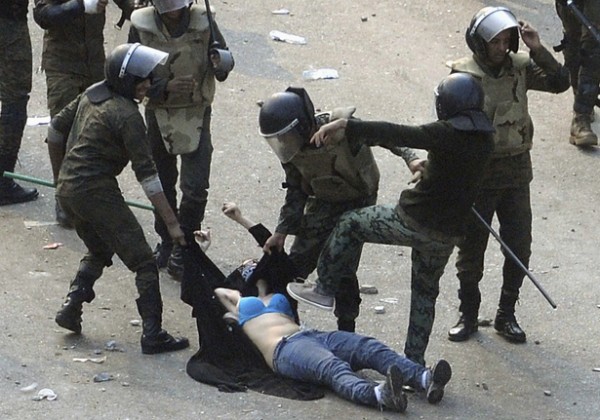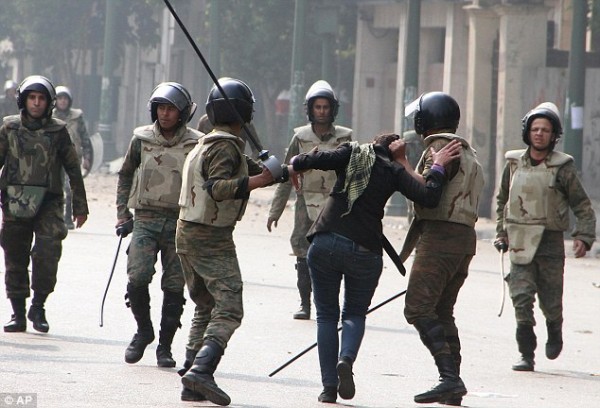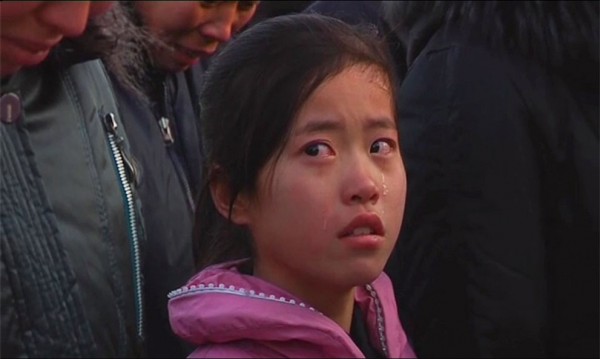Notes
Photo of Woman Stripped by Egyptian Military: Not Shamed, Not a Victim
Women’s bodies historically have been implicated in war in ways that men’s have not. They are goods to protect or spoils for the victor. War, like so many other things in life, objectifies women. Consequently, as appalling as this photo of the Egyptian pro-democracy protester is, it is also familiar. Too familiar. We are accustomed to seeing the limp, half-naked bodies of women and girls in images of war . . . and crime . . . and also to market films and body sprays and shoes. As a result of this cultural conditioning, we have an interpretive frame for this photo—one that positions this protester as a victim and therefore an object of either pity or shame.
The video of the beating accompanying the CNN story quoted Egyptian taxi driver Ahmed Fahmy, who said, “I will go down and fight the army and retrieve the honor of this woman and those martyrs killed for the sake of Egypt’s future.” Indeed, even noble sentiments like that figure this protester as an object of shame—someone whose “honor” must be “retrieved” from the battlefield by a man (a civilian taxi driver, no less). The article in the Atlantic stresses humiliation, the photo caption identifying the figure in the image simply as “a defenseless woman.” The lead paragraph of the Guardian’s coverage of the incident reads, “The woman photographed being beaten in Cairo is an activist who does not want her name revealed because of her shame at the way she was treated, according to those who were with her at the time.” No doubt the protester recognizes that the cloak of shame is harder to wrench away than was her head scarf and shirt.
Interestingly, the Guardian editors chose another photo to accompany that particular story—one that preserved both the protester’s anonymity and her privacy:
That begs the question: how should photographs like these be used? By publishing the photo, news organizations, of course, shed a necessary spotlight on a repressive military force and remind the world that the blooms of the Arab Spring are fading as the tumultuous storms of winter roll in. Speaking through a journalist, the protester herself noted, “It doesn’t matter if I talk [to the media] or not, their stripping me is enough to reveal them [the army] and tell enough to those who still believe them.” That suggests that although she would prefer for her identity to remain a secret, the protester recognizes the pragmatic utility of a shocking image.
The photo also serves as an important reminder of the hypocrisy of regimes that pay lip service to modesty and respect for women’s bodies, but systematically shame and abuse women, especially those who seek political agency. Leaders whose operatives punish a woman protestor by stripping her cannot convincingly invoke religious justifications for keeping women separated from men (and, consequently, undereducated, underemployed, and disenfranchised).
The image would be even more useful, however, if the narrative surrounding it was wrested from its misogynistic moorings. Rarely are women, themselves, viewed as agents in conflict—as individuals whose bodies can effect military, political, and historical change. This image does not portray a victim. It portrays a hero—a warrior waging a battle for democracy. Whether or not her name is revealed, she should proudly join the ranks of other women whose bodies have been battered to secure their political rights: the militant suffragists whose hunger strikes triggered brutal force feedings in prison; the female shirtwaist factory workers whose strike in 1909 was met with brutal police beatings; the civil rights activists whose will could not be broken by fire hoses, billy clubs, or dogs. The Egyptian protester is a woman to be admired, not pitied, and certainly not shamed. Don’t go to battle for her. Go to battle with her.
by Karrin Anderson
Update: To address some confusion readers and tweeters are having about the post regarding the different photos: The two are different women, but both are protesters. The Guardian’s “female protester” pic protects that protester’s privacy and anonymity. The point was that they chose an alternate image to represent the notion of a female protester being attacked.
(photo 1: Reuters. photo 2: Str/AP)




Reactions
Comments Powered by Disqus